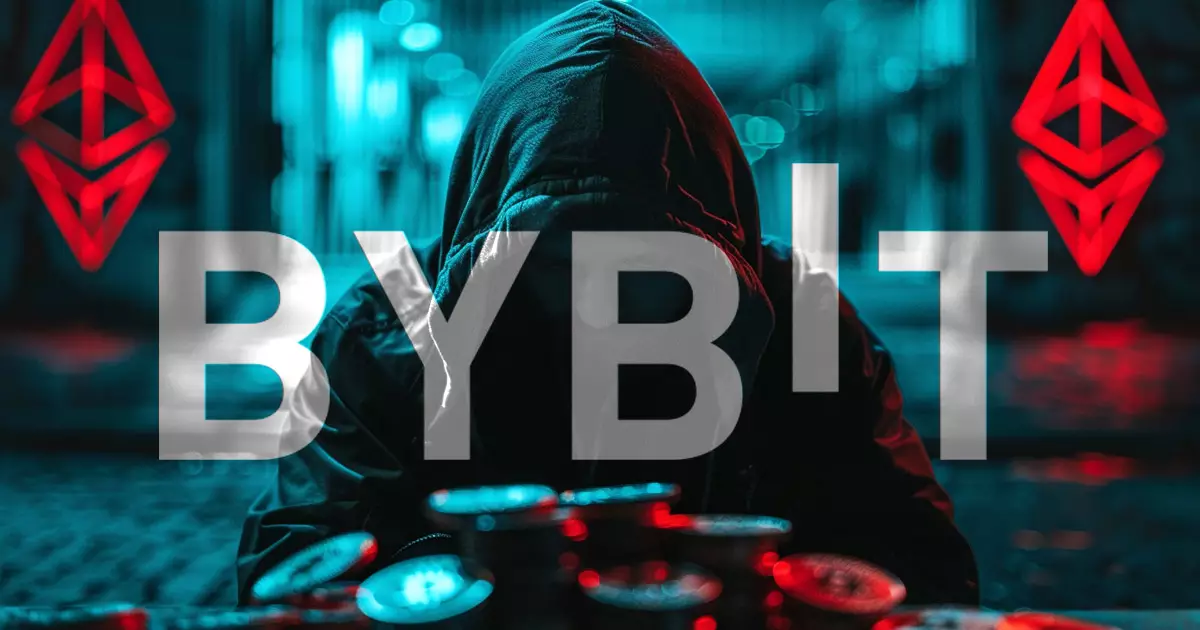The recent cyberattack that preyed upon Bybit and Safe, resulting in an astonishing loss of $1.4 billion, has sent ripples through the cryptocurrency and blockchain security community. Although initial reports suggest that Bybit’s core infrastructure remained intact during the attack, a critical vulnerability in a developer’s machine proved to be the gateway for the hackers, highlighting serious flaws in security protocols across the digital asset landscape.
The forensic investigation into the hack revealed that attackers exploited a weakness in the Safe’s AWS S3 bucket, a popular cloud storage service utilized for managing and storing data. The mechanism employed was surprisingly intricate: a compromised developer machine was utilized to launch a deceptive transaction proposal, which then injected malicious JavaScript into key resources. This technique allowed the attackers to manipulate transaction signatures, effectively altering the operations at a critical point in their execution.
A collaborative forensic effort from Bybit, along with blockchain security firms like Sygnia and Verichains, corroborated the initial findings from Safe. They determined that the malicious code was strategically designed to modify transaction contents at crucial signing stages. This revelation confirms that the hacking incident was not a random, widespread attack, but a well-planned operation with a specific target—namely Bybit’s contract address and possibly another address linked to the attackers.
Significance of Subresource Integrity and Security Protocols
One of the most harrowing insights from this incident is the need for fundamental security upgrades within digital frameworks, particularly regarding front-end services. Security experts have argued that if Safe had implemented basic subresource integrity (SRI) checks, the exploit may not have succeeded. SRI is a rudimentary but powerful verification method that ensures the resources fetched by web applications have not been tampered with.
Yu Xian, founder of SlowMist, emphasized the urgency of revisiting security management models for significant assets, stating that this attack reaffirms the vulnerability of any user-interactive services. In essence, the nature of the exploit underscores that without stringent verification of front-end integrity, other platforms employing similar architectures are potentially at risk of similar attacks.
The fallout from this incident goes deeper, raising questions about the existing security protocols employed at developer levels. Security experts like Jameson Lopp argue that no developer should hold production keys on their personal machines, as this concentrates a significant risk factor. Recommendations suggest that code changes should undergo a rigorous peer review process and involve multiple stakeholders. This multi-layered approach could enhance security and potentially deter such assaults from occurring in the future.
Moreover, Mudit Gupta from Polygon Labs pointed out that critical changes were made by a single developer, raising concerns about over-centralization in system permissions. By implementing checks and balances in authority, the risk of a single point of failure can be markedly reduced, enhancing overall system integrity.
While Safe continues its efforts to investigate the compromised infrastructure and restore operations, the question of accountability looms large. Hasu, strategy lead at Flashbots, has highlighted a key takeaway from the incident: that front-end services must be regarded as inherently vulnerable. He argued against placing undue blame on Safe while neglecting the security lapses present in Bybit’s oversight and infrastructure. The failure to implement message integrity checks, especially when managing vast amounts of funds, raises serious red flags regarding operational and risk management practices.
In response to the attack, Safe has initiated a comprehensive investigation and a phased rollout of enhanced security measures. This includes the rotation of sensitive credentials and infrastructure reconstruction, signifying a commitment to rebuilding trust in the platform and emphasizing an industry-wide push for greater transaction verifiability.
The $1.4 billion hack is not simply an isolated incident but a stark reminder of the vulnerabilities inherent in the rapidly evolving world of blockchain technology. As developers, exchanges, and users navigate this challenging landscape, it is imperative that lessons learned from such attacks are not only acknowledged but also acted upon. The call for improved security measures, accountability, and a collective push toward transparency in operations is louder than ever. By prioritizing these aspects, the blockchain community may better safeguard against future threats, ensuring the integrity of decentralized finance remains intact.














